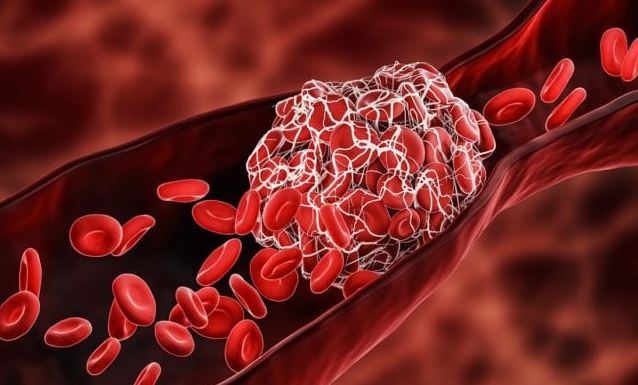
In the wake of the coronavirus (COVID-19) pandemic, countries across the globe have enforced lockdowns to prevent infections. But according to a modeling study published in The Lancet Infectious Diseases journal, combined preventive measures are more effective at slowing the spread of coronavirus than enforcing individual measures like lockdowns.
In the study, researchers estimated the effect individual measures and four combinations of measures have on the R number up to 28 days after being introduced or lifted.
The R number, or reproduction number, is a key measure of virus transmission as well as an infectious disease’s capacity to spread. The R number signifies the average number of people that one infected patient will pass the virus to.
While the R number isn’t fixed, it can be affected by various factors, such as:
- How infectious a disease is
- How a disease develops over time
- How a population behaves
- Immunity already possessed due to prior infection or vaccination
- Location (e.g., a metropolitan area may have a higher R than a rural location)
An R value higher than one indicates a growing outbreak, while an R value below one indicates that an outbreak is slowing down.
Combined measures are key to slowing COVID-19 transmissions
Scientists used data from 131 countries for a high-level overview of the effects of population-level intervention measures, but they said that the data doesn't consider other factors that may influence R value, such as:
- Compliance with interventions
- Changes in population behavior, such as wearing face masks
- The effects of contact tracing and isolation
- Subnational differences in R
These factors can vary by context. Additionally, using the R number as a proxy for transmission has limitations since it's difficult to estimate accurately when prevalence is low.
Professor Harish Nair from the University of Edinburgh explained that combining different measures had a significant effect on reducing coronavirus transmission. Due to a resurgence in infections, Nair urged policymakers to consider combinations of measures to reduce the R number.
The study can inform decisions on which measures to enforce or end, and when these measures can improve transmission rates. However, the effectiveness of these measures will also depend on the local context, including the R number at any given time, the local healthcare capacity and the social and economic impact of measures, added Nair.
The study revealed that a ban on public events significantly reduced the R value by 24 percent after 28 days. The scientists posited that this is because the ban helped prevent super spreader events. In most cases, a ban on public events is also the first measure implemented in most countries.
Meanwhile, lifting bans on gatherings of more than ten people and school reopenings were linked to a spike in R value of 25 and 24 percent, respectively, after 28 days.
According to other studies, combining measures like school closures, social distancing and lockdowns could significantly reduce R to near or below one. The Lancet study was the first to look at the effects on R value after these measures had been lifted. (Related: WHO reverses course, again: Lockdowns as primary response to COVID-19 now said to be “damaging.”)
The effects of lifting COVID-19 measures
Data on daily country-level estimates of R value were associated with data on what measures the countries enforced from January 1, 2020 to July 20, 2020. The timeline was then divided into individual phases when all measures were the same in each country.
The researchers studied 790 phases from 131 countries and used a model to determine the link between which measures were in place and how they changed the R value.
Using this information, the research team estimated the effect of enforcing or ending measures for up to 28 days on the R value. They also modeled four combinations of measures that could be introduced to prevent the resurgence of COVID-19.
The combinations tested in the study include mixtures of the individual measures, from banning events and limiting public gatherings to a full lockdown. Findings showed that the least effective combination of measures can still reduce R by 29 percent after being enforced for 28 days. Even this combination proved to be four percent more effective than individual measures like banning public events.
On the other hand, the most comprehensive combination of measures, which involves a lockdown, school closures and limits on movement, resulted in a 52 percent reduction. However, the effect of introducing even a single measure was not immediate. It took an average of eight days after enforcing a measure to see 60 percent of its effect on reducing the R value.
Researchers were unable to factor in the impact of other measures linked to certain restrictions, like handwashing, wearing masks or people following the rules. While reopening schools significantly increased the R value, the researchers said that they couldn't account for the impact of class size limits, deep cleaning, social distancing or temperature checks on arrival.
It is also unclear if the increase in R value after school reopening was linked to certain age groups, said Nair. There might be substantial differences in adherence to social distancing measures from one class to another, but the researchers didn't have the data to confirm this.
Results also showed that people didn't immediately follow workplace closures and lockdown requirements, which was similar to the delay between the measures and the effects seen on the R value from one to three weeks.
Some of the most effective measures that improved the R value were more easily implementable by law. These measures included bans on school reopenings and on public events. The decrease in R value because of these measures suggest that they had more immediate effects and that compliance was easier to ensure.
On the other hand, low compliance when it came to bans on gatherings of 10 or more people appeared to be the reason why this particular measure had an insignificant impact on the R value.
In a linked comment, Professor Chris Bauch from the University of Waterloo in Canada explained that even though improvements in R value was varied, their findings suggest that combining non-pharmaceutical interventions (NPIs) do help reduce the rate of COVID-19 transmission. And because the study shows which NPIs are effective, its findings have significant implications, particularly since enforcing some of these interventions for extended periods has massive socioeconomic effects.
"In a similar vein, transmission models that project COVID-19 cases and deaths under different NPI scenarios could be highly valuable for optimizing a country's portfolio of NPIs. Moreover, I think R provides a social utility that epidemiologists can easily overlook," said Bauch.
Bauch also emphasized that large-scale NPIs will only succeed when paired with strict adherence from the public. The R value can also motivate people to act and give them useful feedback on how adherence helps prevent infections amid the pandemic.
Sources include:
Please contact us for more information.




















